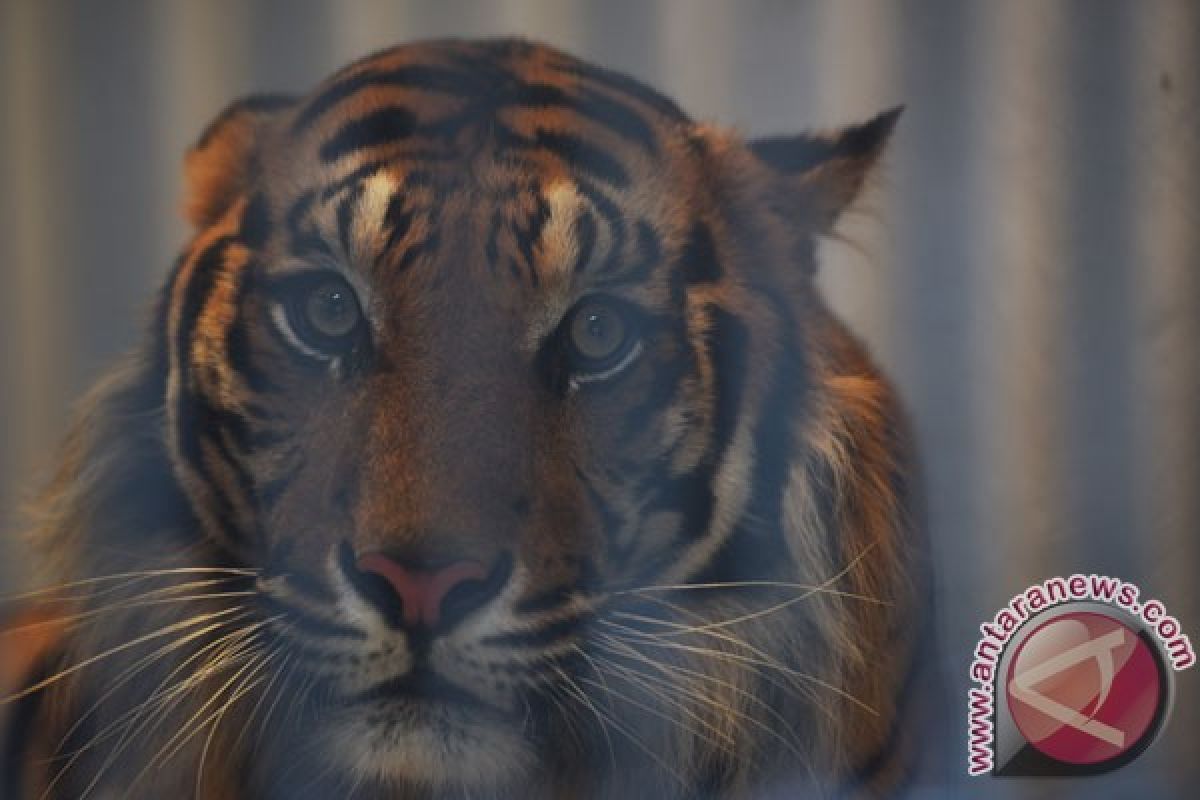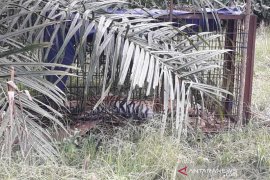Rampant poaching, coupled with the opening of massive plantation areas and forest fires, has led to the continued drop in the number of protected Sumatran tigers.
The Sumatran tiger is one of the last remaining tiger species in Indonesia after the Balinese and Javanese tiger species were declared extinct, but now, its existence remains under threat because its habitat has shrunk and it is being hunted for trading.
KLHK officials on Thursday (Sept. 29, 2016) apprehended two men in possession of a Sumatran tiger skin in Indragiri Hulu District, Riau Province, Security and Law Enforcement Center for Environment and Forests spokesman Edward Hutapea told Antara in Pekanbaru on Thursday night.
According to Hutapea, the two men are known by their initials as AH (51) and JO (35). The intact Sumatran tiger skin they were carrying was seized as evidence.
After a two-week coordination effort between the KLHK, Jambi Natural Resources Conservation Agency, and the World Wildlife Fund (WWF) and reconnaissance in Jambi, the officials apprehended the duo for illegally possessing the Sumatran tiger skin.
WWF said there was still a substantial market in Asia for tiger parts and products.
Both actors are still being questioned as witnesses, but it is possible that their status will be upgraded as suspects if the investigators find any evidence of criminal activity.
The confiscated Sumatran tiger skin had a length of some two meters and was intact, with no defects from head to tail, indicating that the poachers were professionals.
A South Sumatran police team early this year caught a man named Suharno alias Reno, a trader in Lubuklinggau city, South Sumatra.
When Suharno was caught, he was in possession of a tiger skin measuring 120 cm long in a plastic bag containing preservatives and some tiger bones weighing two kilograms.
To the authorities, the man claimed he receive these parts of tiger from a tiger hunter in Jambi.
An intact skin of a tiger is sold between Rp50 million and Rp100 million, depending on its size and condition.
Suharno was then sentenced by the district court of Palembang to six months in jail while he could have been given a maximum sentence of five years and fined Rp100 million, based on Law Number 5 of 1990 on Ecosystem and Conservation of Living Natural Resources.
However, Animals Indonesia, a social community institution for animal conservation, deplored the fact that the Palembang district court meted out a light sentence to Suharno, the man involved in the tiger skin trade.
For the Animals Indonesia, the light sentence of Suharno was very disappointing because the defendant was clearly proven as indulging in trading skin and bones of Sumatran tiger, a species falling under protected animal category.
Therefore, every effort must be made to raise public awareness of wildlife protection after many large mammals such as Sumatran tigers are killed each year, their tusks hacked out, and their bodies are left to rot.
Public awareness must also be raised to curb illicit trade involving wild animals and their products which is currently the worlds fifth largest business with a turnover of US$19 billion each year.
Indonesia, according to ProFauna, is rich in biodiversity with more than 300 thousand wildlife species or 17 percent of those in the world.
Besides, the country also becomes the habitat of endemic wildlife, and most of them in Indonesia are found nowhere else around the world.
According to the International Union for Conservation of Nature and Natural Resources (IUCN), there are 259 endemic mammals, 282 endemic birds, and 172 endemic amphibians.
Despite rich in biodiversity, Indonesia is also notorious as a country which has long list of the threatened wildlife, and the threatened wildlife in the country in 2011 included 184 mammals, 119 birds, 32 reptiles, 32 amphibians, and 140 fish.
There are 68 species which are critically endangered and 69 endangered species, and 517 vulnerable species. These wildlife will be eventually extinct if there is no action to save them from extinction.
In 2015 the Environmental Affairs and Forestry Ministry handled 27 cases of protected wildlife-related crimes, mostly involving mammals.
Of the 27 cases, 14 cases involved mammals, two birds, two primates, four fishes, four reptiles, and one flora, according to the ministrys Director General for Law Enforcement, Rasio Ridho Sani.
Forest is the natural habitat for the wildlife but the main factor of threatened wildlife in Indonesia is deforestation, making the forest in the country is now less than 120 million hectares.
Forest conversion into palm oil plantation, industrial production forest, and mine becomes serious threat towards the survival of rare wildlife including orangutan, Sumatran tiger, and Sumatran elephant.
(T.O001/INE/KR-BSR)
Reporter: Otniel Tamindael
Editor: Priyambodo RH
Copyright © ANTARA 2016










